Indian medical faculty’s research resonates with needs of society
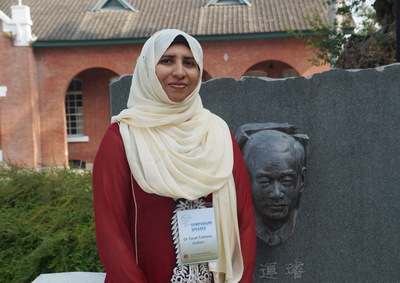
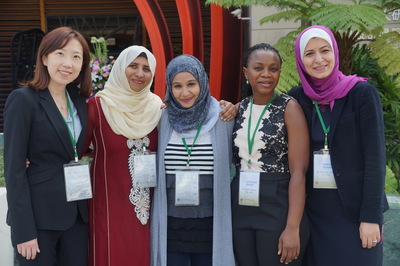
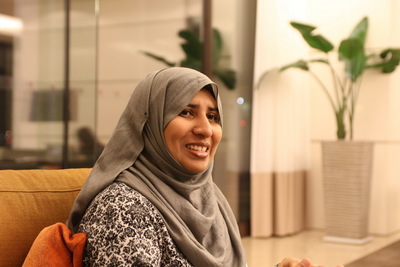
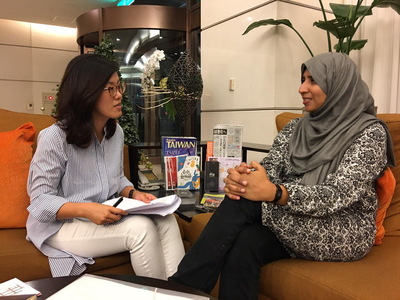
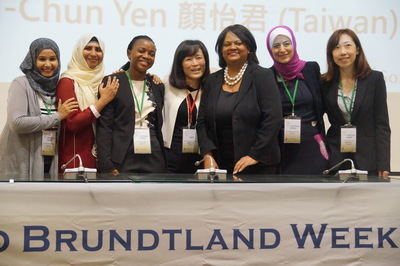
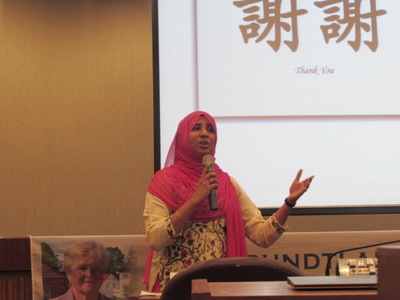
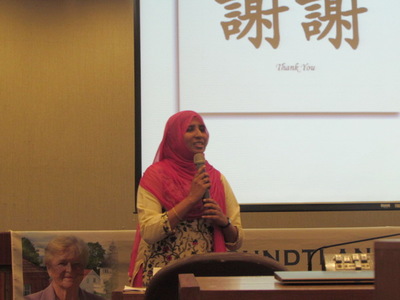
Farah Naaz Fathima, 39, professor at St. John’s Medical College, Bangalore, India, is one of the five recipients of Gro Brundtland Award 2017. “This is tremendous encouragement for female scientists like me from developing countries.”
Her professional goal is to contribute towards the improvement of the quality of life of people in developing countries through the design and implementation of cost effective, sustainable and replicable programs for Non Communicable Diseases (NCDs) like heart diseases, diabetes, high blood pressure and stroke.
Fathima’s area of interest is NCDs control prevention and control with a special focus on cardiovascular diseases.
In India, she teaches Community Health to undergraduate and postgraduate medical students and health workers. She is also involved in research in community-based projects and in the coordination of outreach primary care programs.
Fathima says, “One of the earliest studies that I worked on was the PrePAre study which is primary prevention strategies at the community level to prevent cardiovascular disease.”
The study is designed to test the effectiveness of trained community health workers in reducing cardiovascular risk across 3 sites in rural India, according to Fathima.
She says, “India has over 60% rural areas where people live in villages. There’s no doctor in villages. My research looks at training eight-grade ladies to measure blood pressure and sugar, telling people what to do when their blood pressure is high and how to develop a healthy lifestyle.”
In the past 13 years, she has actively involved in the training of community health workers, design of case record forms, on field co-ordination of the project, data base management, statistical analysis and the publication process.
She explains, the social determinants of health influence vulnerability to NCDs and exposure to their modifiable risk factors. People of lower education and economic status are increasingly exposed to NCD risks and are disproportionately affected by NCDs.
NCDs are the leading causes of death worldwide accounting for nearly two thirds of all global deaths, says Fathima. “More than 80% of these deaths occur in low and middle income countries like India. It is imperative that all sustainable development efforts include health and NCDs as they undermine social and economic development throughout the world.”
“Almost every household in India has at least one person with a NCD,” she says.
Fathima’s current research activities also related to CVDs, including projects on various facets of CVD including economic evaluation of diabetes, CVD control in occupational settings, integration of CVD and mental health into the public health system and perceptions and barriers regarding CVD care among health care providers and patients.
Fathima has led a school-based research program on the primordial prevention of CVD called Program for Adolescent Chronic Disease Education (PACE).
“As a part of this program we documented the CVD risk factor profile among adolescents in different settings - rural, semi-urban, urban, private and government schools). We found that though the magnitude of CVD risk factors are more in urban areas, they are nevertheless present in rural areas also. We have also designed and implemented intervention strategies involve simple group activities and games for CVD risk reduction among adolescents,” she says.
Her studies are field tested in the outreach village level CVD clinics in rural areas.
In these clinics, a team consisting of a doctor and a health worker visit the designated villages on a monthly basis and deliver CVD care, according to Fathima.
Community participation is ensured in the running of these clinics and the local village leaders provide the infrastructure required for the clinics, she adds.
Knowledge dissemination and skill transfer to community health workers is very crucial for the control of CVD in resource constraint settings with limited access to doctors especially in rural areas, she says. “The use of community health workers in CVD control will help bridge the inequalities in access to care in underserved settings.”
Fathima’s researches help in the development of programs and policies for CVD control.
“I try to do the best what I would like to do,” says Fathima. “For me, research is about to change the life of people who you work with, to change the community that you work with.”
Research should be relevant to the needs of the society and should lead to answers that will lead to improvement in the quality of life of people, she says.
Fathima comments that research is much more than mere number of publications and research projects on your CV. It is about making a difference in lives of people.
Fathima has been the faculty at St. John’s Medical College for ten years and there are youngsters who look up to her. She offers her advice to the students saying, “Whatever your researches do should be linked to the community. And believe in yourself. Always put in your best efforts.”
Fathima, a mom, talking about the challenges female scientists face, says, “For me, my career is important and so is my family, so I don’t want to be in the situation that I have to choose between, because both are important.”
“I am extremely lucky to have a very supportive family. My husband, my parents, my in-laws have been very supportive,” she adds.
India is a country with a lot of hope as well as challenges, says Fathima. “Females, in general and scientist in particular face a lot of obstacles in their career paths. Facilities for training scientists are available in metropolitan cities. The government has put in schemes for female researches which are useful in the early stages of research career.”
India is in a phase of demographic transition facing the triple burden of communicable diseases, non communicable diseases and maternal and child health problems, according to Fathima.
She says, “I am committed to the cause of prevention and control of CVD in developing countries like India. I am eager to learn new things and am willing to put in the necessary effort to do so.”
Enditem/
Her professional goal is to contribute towards the improvement of the quality of life of people in developing countries through the design and implementation of cost effective, sustainable and replicable programs for Non Communicable Diseases (NCDs) like heart diseases, diabetes, high blood pressure and stroke.
Fathima’s area of interest is NCDs control prevention and control with a special focus on cardiovascular diseases.
In India, she teaches Community Health to undergraduate and postgraduate medical students and health workers. She is also involved in research in community-based projects and in the coordination of outreach primary care programs.
Fathima says, “One of the earliest studies that I worked on was the PrePAre study which is primary prevention strategies at the community level to prevent cardiovascular disease.”
The study is designed to test the effectiveness of trained community health workers in reducing cardiovascular risk across 3 sites in rural India, according to Fathima.
She says, “India has over 60% rural areas where people live in villages. There’s no doctor in villages. My research looks at training eight-grade ladies to measure blood pressure and sugar, telling people what to do when their blood pressure is high and how to develop a healthy lifestyle.”
In the past 13 years, she has actively involved in the training of community health workers, design of case record forms, on field co-ordination of the project, data base management, statistical analysis and the publication process.
She explains, the social determinants of health influence vulnerability to NCDs and exposure to their modifiable risk factors. People of lower education and economic status are increasingly exposed to NCD risks and are disproportionately affected by NCDs.
NCDs are the leading causes of death worldwide accounting for nearly two thirds of all global deaths, says Fathima. “More than 80% of these deaths occur in low and middle income countries like India. It is imperative that all sustainable development efforts include health and NCDs as they undermine social and economic development throughout the world.”
“Almost every household in India has at least one person with a NCD,” she says.
Fathima’s current research activities also related to CVDs, including projects on various facets of CVD including economic evaluation of diabetes, CVD control in occupational settings, integration of CVD and mental health into the public health system and perceptions and barriers regarding CVD care among health care providers and patients.
Fathima has led a school-based research program on the primordial prevention of CVD called Program for Adolescent Chronic Disease Education (PACE).
“As a part of this program we documented the CVD risk factor profile among adolescents in different settings - rural, semi-urban, urban, private and government schools). We found that though the magnitude of CVD risk factors are more in urban areas, they are nevertheless present in rural areas also. We have also designed and implemented intervention strategies involve simple group activities and games for CVD risk reduction among adolescents,” she says.
Her studies are field tested in the outreach village level CVD clinics in rural areas.
In these clinics, a team consisting of a doctor and a health worker visit the designated villages on a monthly basis and deliver CVD care, according to Fathima.
Community participation is ensured in the running of these clinics and the local village leaders provide the infrastructure required for the clinics, she adds.
Knowledge dissemination and skill transfer to community health workers is very crucial for the control of CVD in resource constraint settings with limited access to doctors especially in rural areas, she says. “The use of community health workers in CVD control will help bridge the inequalities in access to care in underserved settings.”
Fathima’s researches help in the development of programs and policies for CVD control.
“I try to do the best what I would like to do,” says Fathima. “For me, research is about to change the life of people who you work with, to change the community that you work with.”
Research should be relevant to the needs of the society and should lead to answers that will lead to improvement in the quality of life of people, she says.
Fathima comments that research is much more than mere number of publications and research projects on your CV. It is about making a difference in lives of people.
Fathima has been the faculty at St. John’s Medical College for ten years and there are youngsters who look up to her. She offers her advice to the students saying, “Whatever your researches do should be linked to the community. And believe in yourself. Always put in your best efforts.”
Fathima, a mom, talking about the challenges female scientists face, says, “For me, my career is important and so is my family, so I don’t want to be in the situation that I have to choose between, because both are important.”
“I am extremely lucky to have a very supportive family. My husband, my parents, my in-laws have been very supportive,” she adds.
India is a country with a lot of hope as well as challenges, says Fathima. “Females, in general and scientist in particular face a lot of obstacles in their career paths. Facilities for training scientists are available in metropolitan cities. The government has put in schemes for female researches which are useful in the early stages of research career.”
India is in a phase of demographic transition facing the triple burden of communicable diseases, non communicable diseases and maternal and child health problems, according to Fathima.
She says, “I am committed to the cause of prevention and control of CVD in developing countries like India. I am eager to learn new things and am willing to put in the necessary effort to do so.”
Enditem/
Provider:
News Center
Date:
2017-03-16



